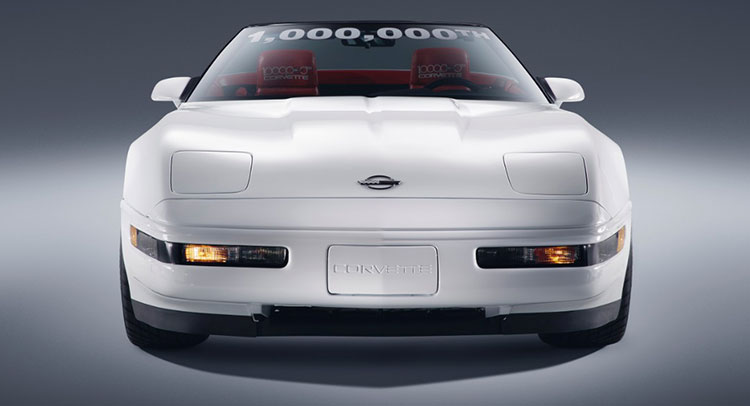You might recall that in February 12, 2014, a sinkhole opened at the National Corvette Museum and swallowed eight historic Corvettes, including the 1992 1 millionth Corvette C4, right?
Well, a year after GM announced it started working on the car’s restoration, we can see it shining like new, as if nothing ever happened. In fact, it’s almost got completely re-vised after it was moved to GM’s Design Center and approximately 30 craftspeople and technicians from GM’s Design’s Mechanical Assembly Group and Service Operations had its way with it.
As the car was being disassembled, it was found that each part of it was signed by an employee, as Mark Reuss, General Motors executive vice president, Global Product Development, stated:
“When we disassembled it, we found that each employee involved in building it had signed a part of the car, which was fantastic and moving to see. It brought the history to life, and reinforced the importance of the project.”
So, despite the extensive damage the team decided to preserve and repair as many original components as possible, especially as every bit of the Corvette was carrying a signature. Only two signed components were unable to be salvaged, but the team had the autographs scanned, reproduced and transferred on the replacement parts.
Sure, some parts were replaced, such as the hood, the front fascia and the lower panels between the front wheels and doors, but the parts signed were thoroughly repaired and restored in order to maintain the car’s authenticity. That includes the rear fascia and front exhaust system.
Even the “1 millionth Corvette” windshield banner was exactly reproduced, as the computer graphic file used for the original was still available.
This is the second Corvette restored by GM, following the lightly damaged ZR1 “Blue Devil” prototype. Moreover, The National Corvette Museum will oversee the restoration of a third car, a 1962 Corvette.
The other five cars damaged in the accident will remain unrestored, sporting the damaged “recovered look” in order to preserve the historical significance of the, as they will become part of a future sinkhole-themed display in the museum.















